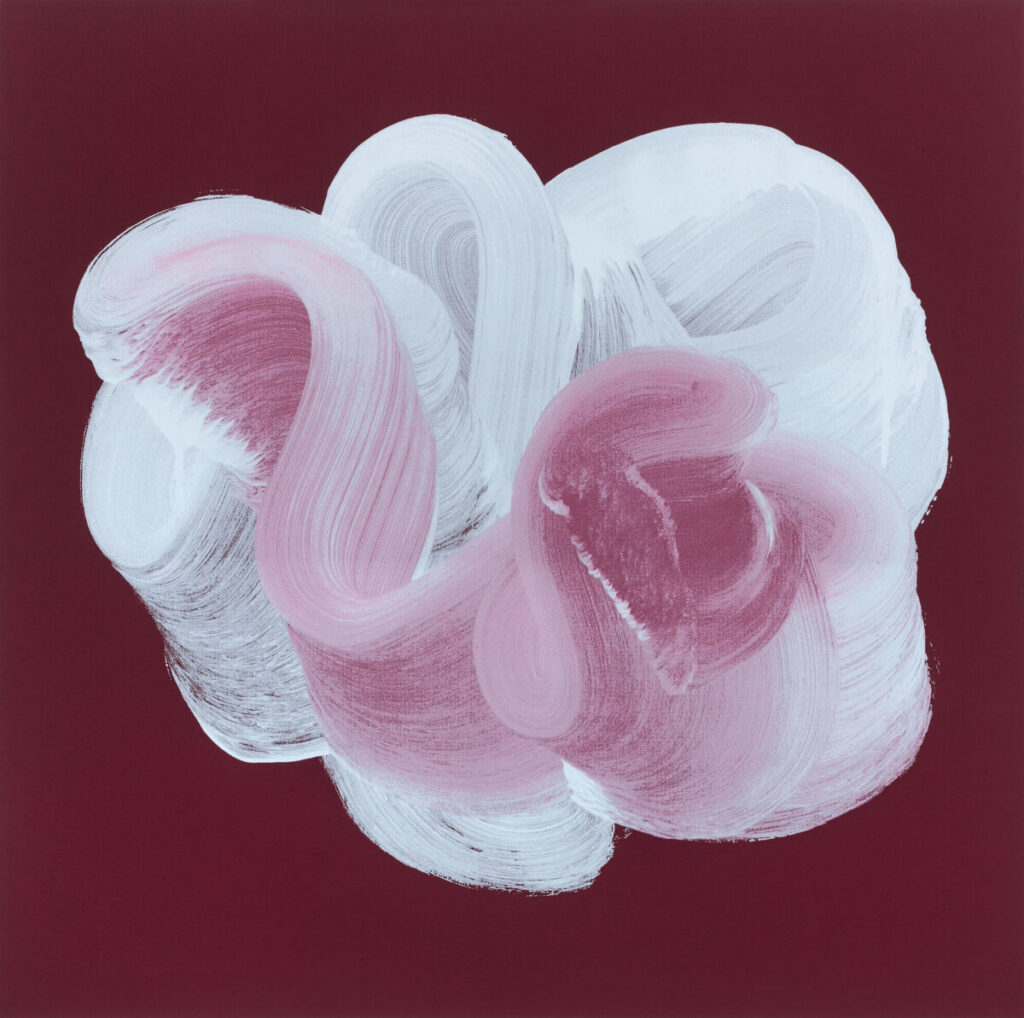Between mystical breath and political tension, Najia Mehadji makes the line a space of resistance. At MAC VAL, her solo exhibition My Friend the Rose unfolds a work permeated by the Mediterranean imaginary, where beauty surfaces at the edges of vertigo. A painting of the body, of the world, and of what connects them: movement.
This exhibition, presented until September 21, 2025, at MAC VAL, the contemporary art museum of Val-de-Marne, unfolds a work that is both meditative and insurrectionary, seeking to express what the world does to the body, and what the body can still offer to the world. Curated by Nicolas Surlapierre, also the museum's director, it avoids chronological hanging in favor of a flow of images, lines, and silences. An immersion into Najia Mehadji's painting, which does not seek to freeze, but to make vibrate.
My Friend the Rose
The title, borrowed from the well-known song by Françoise Hardy, refers to an intimate imaginary. But it is especially the Eastern version given by the singer Natacha Atlas that resonates here: a voice that glides between languages, between worlds, between life and death. For Najia Mehadji, the rose is not ornamental. It is manifest. Emerging in 2003 following the war in Iraq, it returns in several series as a figure of opposition to the brutality of reality. A form of beauty that resists.
The motif of the wave also traverses the exhibition. It embodies movement, impetus, breath – but also collapse. This wave is that of the Mediterranean. A beloved sea, a sea of childhood, a sea of light. But also a tomb, a chasm. During our interview in her bright studio in Ivry-sur-Seine, Najia insists: the Mediterranean is not just gentleness. It is a space of passages, of deaths and rebirths. This vital tension is at the heart of her work. The wave thus becomes a metaphor for the fundamental ambivalence that runs through her: Eros and Thanatos. This tension is never theoretical. It is embodied in forms, gestures, compositions.
The dome as well as the cupola are thus recurring motifs in a formal repertoire in motion, also composed of waves, scrolls, spirals, constellations, tree-like structures, pleats… All these forms are organized around the same principle: they translate an impetus, a tension between anchoring and elevation, between interiority and expansion. A geometry of the living, vibrant, never frozen.
I Paint Standing While Dancing
“I paint standing, while dancing,” confides the artist. This link between body and painting is not anecdotal. It is central. The line is an extension of breath. The hand is guided by breathing. In her studio notes, she speaks of “the grace of the line,” of “the energy of the living.” The works are born from a total physical engagement. One thinks of whirling dervishes, of ink that glides, of lines that swirl. The movement is not decorative: it is vital. It connects the body to the world, the intimate to the cosmic.
The exhibition presents emblematic series including the brand new Rosebud, all in colorful curves, in the lineage of War Flowers, Mystic Dances, or Women & War… The latter, created in 2023, pays tribute to the victims of contemporary tragedies – Ukraine, Lebanon, Morocco – and particularly to women. The violence is present, but never frontal. It is traversed, transformed. The black ink, on a white background, takes on an almost liturgical value. The lines outline absences. The voids are breaths.
A Double Belonging
Born in Paris, living between France and Morocco, Najia Mehadji embodies a double belonging. Her work is nourished both by Western avant-gardes and by the spiritual and aesthetic legacies of the Arab-Muslim world. She studied at the Centre Saint-Charles, the art school of the Sorbonne, then frequented the circles of avant-garde theater and conceptual art, before inventing her own path, made of simplicity and resonance. She rejects categories – abstraction, figuration – to better make vibrate what circulates in between.
The exhibition designed at MAC VAL respects this circulation. The works converse without hierarchy. The scenography avoids the retrospective effect in favor of resonance. Each piece extends the other. The large suspended canvases, the works on paper, the silkscreens compose a visual polyphony. The gaze circulates, stops, departs. One enters into a logic of breath, rhythm, resonance.
This exhibition is accompanied by a catalog, which includes a poem by Camille Laurens, Gestes, originally published in the collection Bal.l.ades by Éditions 110 Véronique Rieffel. This text accurately extends the inner movement of the artist's work: it embraces the rhythm of the body, the heartbeat, the pulse of the line.
At the end of the journey, a sensation persists. That of an art that does not merely represent, but seeks to traverse. An art that engages the body, but also the soul, in a radically living relationship to the world. For Najia Mehadji, beauty is never decorative. It is struggle, breath, presence. A response to brutality. A standing dance in the clamor of the world.

Atelier Jérome ARCAY 80 x 80 cm
Cover Photo: Najia Mehadji Mystic Dance No. 1, 2011, pigment digital print limited to 5 copies, 160 x 160 cm
Founder of the Institute of Cultures of Islam in Paris, Véronique Rieffel also directed the French Institute in Alexandria before dedicating herself to curating exhibitions and artistic projects between Europe, the Middle East, and the African continent. She is the author of the essay Islamania (Beaux Arts Éditions) which revisits art history from a non-Western-centric perspective.
